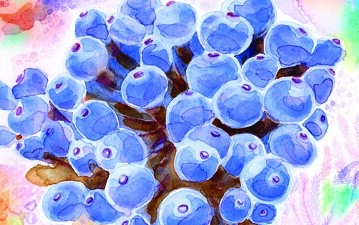The bubble-tip anemone (Entacmaea quadricolor), also known as the bubble tip anemone, bubble anemone or bulb anemone, is a species of sea anemone from the Indo-Pacific. In the wild, this anemone is a natural host of several species ofanemonefishes, including the Cinnamon (Amphiprion melanopus), Tomato (A. frenatus), Orange-fin (A. chrysopterus), Clark’s (A. clarkii), False Pecula (A. ocellaris), Percula (A. percula) and Maroon (Premnas biaculeatus).
E. quadricolor anemones often appear in a variety of morphs, including rose, orange, red and standard green. This sea anemone can grow to be up to a 30 centimetres (0.98 ft) in diameter, and obtains the majority of its energy from solar radiation(sunlight) via its symbiotic zooxanthellae. Nutrients are generally obtained by filter feeding using its sweeping tentacles, or through wastes and debris cleaned from the surface of its partner clownfish. In aquariums, this sea anemone will reproduceasexually when in proper care with supplemented minerals such as iodine and other trace elements (usually purchased as an enrichment cocktail by most home aquarists).
In the wild, Bubble Tip Anemones are found in two locations. Large specimens, withtentacles that are more streaming or stringy, are often found in deeper waters with more dimly lit conditions. These specimens are often solitary. Smaller specimens are often located in groups or colonies, nearer to the surface, in bright sunlight. These specimens tend to show the bulbous tips on their tentacles that are characteristic to Bubble Tip Anemones. Although there are various theories about why some Bubble Tip Anemones develop these tips and some do not, it is widely believed that the bulbs are related to the light level in the anemone’s habitat; specimens given more light are believed to have bubble tipped tentacles.
(From Wikipedia, May 31st, 2012)




